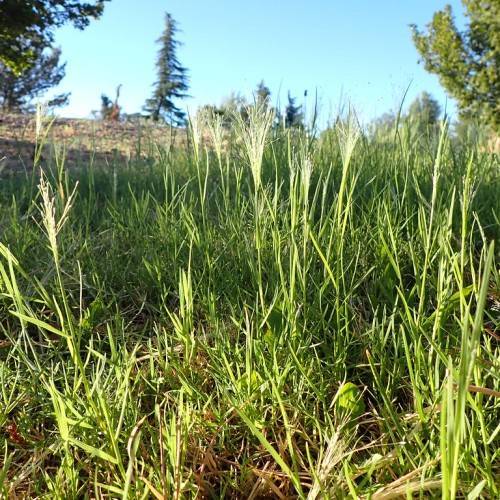
Kentucky bluegrass
Poa pratensis (group)
Cycle:
Perennial
Watering:
Average
Hardiness Zone:
3 - 7
Flowers:
Flowers
Sun:
Full sun,part shade
Leaf:
Yes
Growth Rate:
High
Maintenance:
Moderate
Drought Tolerant:
Yes
watering
Kentucky Bluegrass (Poa pratensis (group)) should be watered regularly to ensure proper growth and development. It requires at least 1 inch of water per week. To ensure that the plant is receiving an adequate amount, water for 15-20 minutes once or twice a week. If the soil does not feel moist 4-6 inches beneath the surface, you should water until the soil is moist. Watch for signs of overwatering such as yellowing leaves and take extra care not to overwater. Water less in the winter when the plant's activity slows down, but still make sure that the soil does not dry out completely. When temperatures rise in the summer months, increase the frequency of watering to make sure that the soil does not get too dry.
sunlight
Kentucky bluegrass requires a minimum of 5 hours of sunlight each day. It tends to thrive in sunny, partly shady locations and performs best in full sun in the morning, with some afternoon shade during the hotter months. During mid-summer, when temperatures are at their peak, shade is beneficial to allow the grass blades some respite from the intense heat. Kentucky bluegrass will produce a lush, healthy lawn with an inch or more of water weekly. Watering should be deep and infrequent to develop strong roots and reduce disease.
pruning
Kentucky bluegrass (Poa pratensis (group)) should be pruned once per year in early to mid-spring (from March to mid-April). Light pruning is recommended to remove and control existing shoots or seed heads, as well as to promote new growth. Since it is a cool-season grass, more severe pruning should not be done because it can cause damage and stress to the plant. Pruning should be kept to a minimum, involving no more than 1/3 of the existing foliage. In addition, tools should be kept sharp and sharp blades should be used to ensure clean cuts. Ideally, pruning strokes should be done in the direction of the grass blade and break at the node to reduce damage to the plant.
